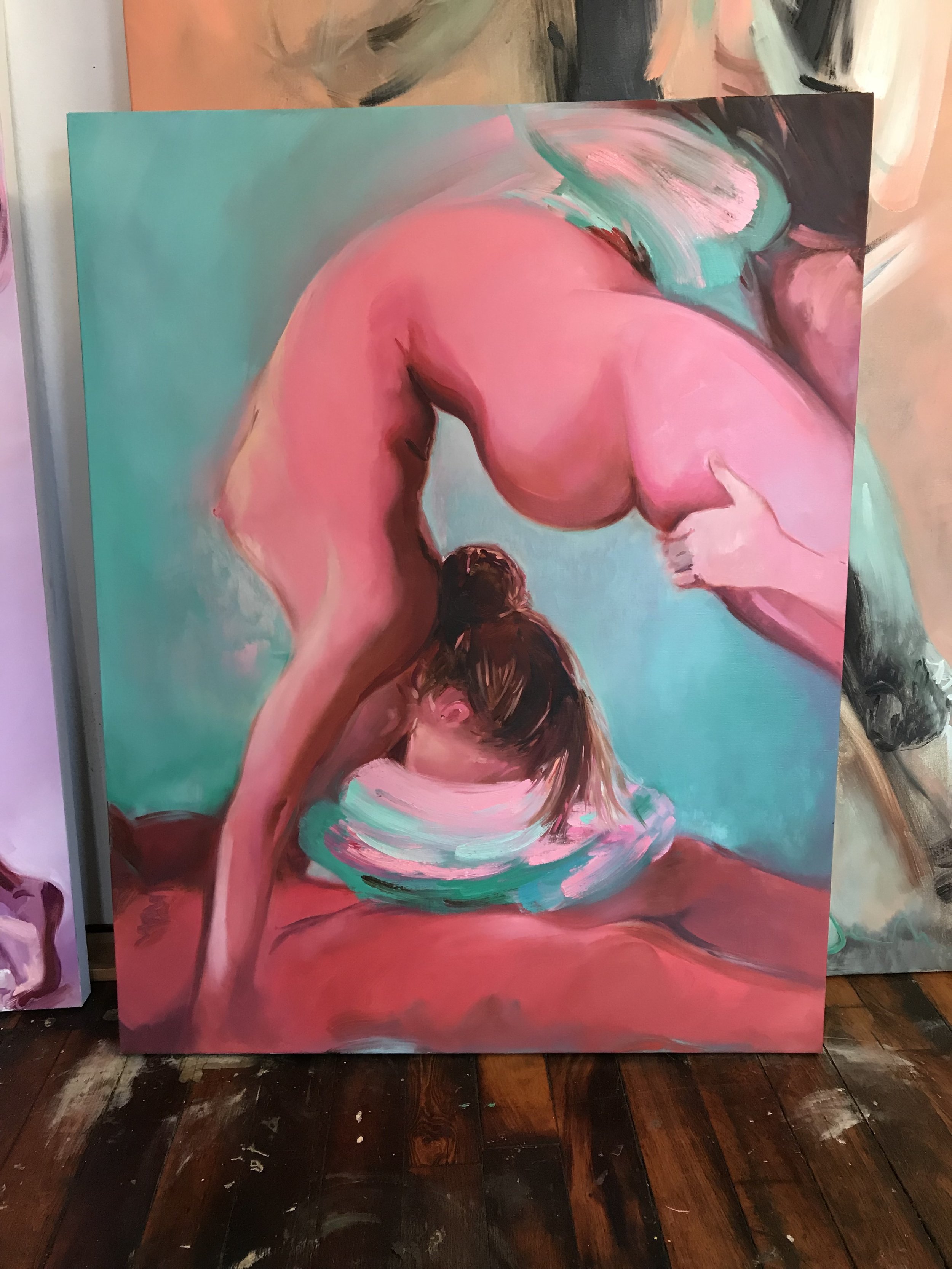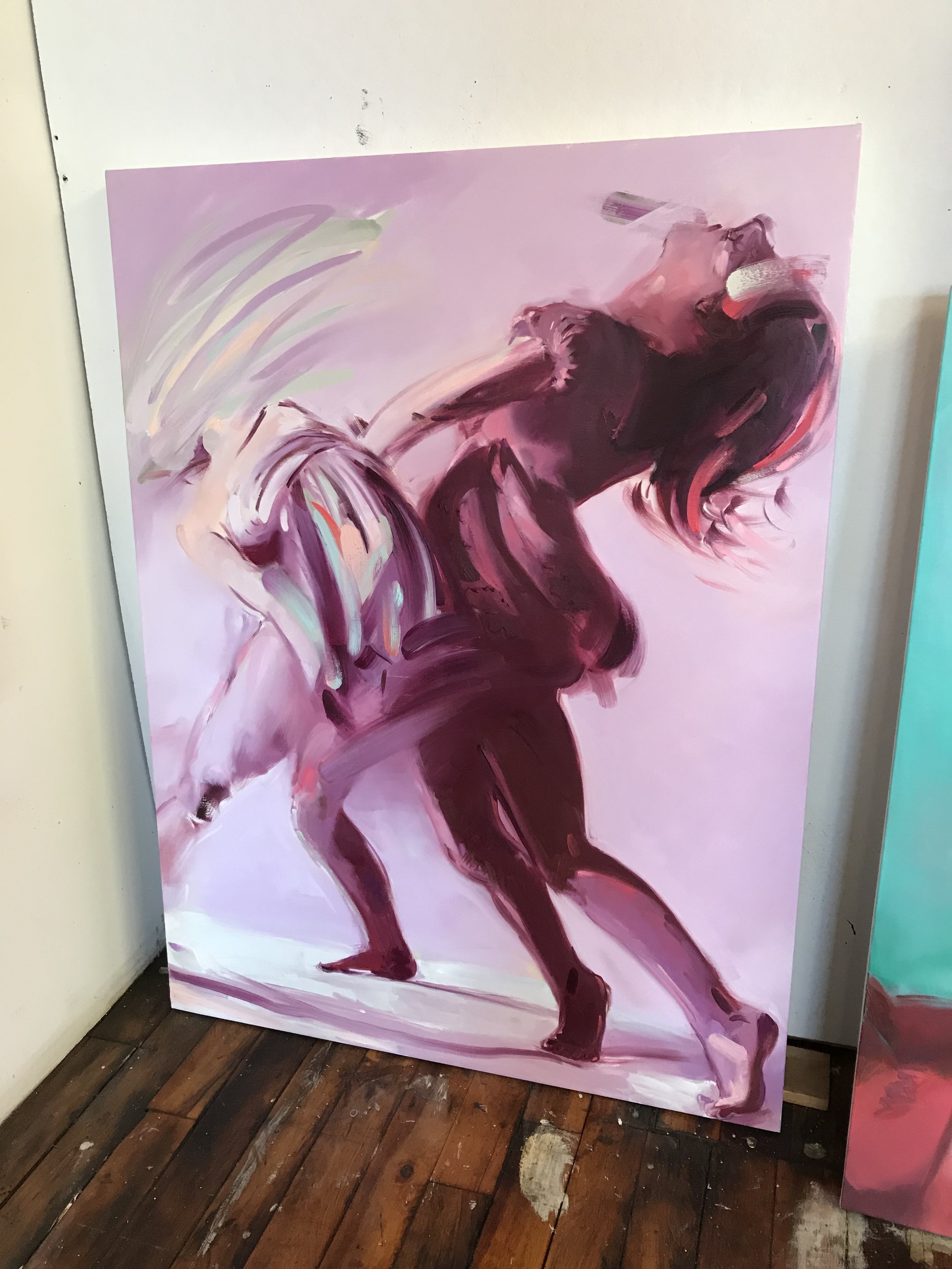To celebrate International Women’s Day this year, we asked our artists to tell us about the women they look up to and how they have inspired them, whether it was an artist, a relative, or an important figure in their lives:
Holly Harrison
“An artist who never fails to inspire me is Eva Hesse. Her work has a different aesthetic than mine, but I love how open and inventive she was with her materials and how committed she was to her process. I’m fascinated by how quietly riveting her sculptures are, and how she used mundane, fragile materials and transformed them into strange and compelling shapes. On more than one occasion, I’ve been drawn to a piece at an exhibition, only to find out that it’s one of hers.” - Holly Harrison
Susan Murie
“I love Helen Frankenthaler's work for its beauty, innovation and scale. In recent years, I made special trips to see her work; to the Art Institute of Chicago for Helen Frankenthaler Prints: The Romance of a New Medium, in 2018 and The Provincetown Museum of Art for Abstract Climates: Helen Frankenthaler in Provincetown, in 2019. Her free and experimental painting continues to inspire me to try new things in my own work.” - Susan Murie
“I am inspired by women who persevere and overcome, to live, love, teach, lead, create, nurture, challenge, protest, sing, play and in their own unique way, leave the world better than they found it.” - Lisa Foster
“There are so many women who inspire me each day, but the most impactful is my mother. Her creative and curious nature opened the doors to my imagination countless times. Her studies and love of art history brought us to countless museums growing up. During this very challenging year of pandemic, she continues to be incredible supportive and inspiring, with our long phone calls discussing topics from Herodian art and history to her childhood memories and currently daily survival stories. Her generosity with her friends and the women of her community is well known. Much love to my mom, Linda Basson Freiberg!” - Ariel Basson Freiberg
“Vija Celmins has inspired me since I was in undergrad. She was one of the first contemporary artists I was introduced to and I immediately fell in love with her sublime paintings and drawings. Her unabashed use of extreme photorealism helped give me permission to also practice Photorealism, a sentiment that has carried through in my practice to this day.” - Katelyn Ledford
"While I could talk endlessly about so many women who have inspired me, I can’t help but think about the person who I have never wanted to disappoint. A lot of who I am as a person, which is reflected in my artwork, came from my Grandmother. Growing up I spent a lot of time with her learning to bake, learning about gardening, making puzzles, and playing in the woods behind my grandparents’ home. Before deciding to pursue art, I thought of pursuing cooking because of her and even worked in a kitchen during the summers I was in art school. Some things that I have carried over into my art practice are, if you’re going to do something, give it your all, and to remain true to yourself." - Kristina McComb
“First person who popped into my head is Jadé Fadojutimi. I’ve been a fan for a few years now, her paintings are so wonderful. She is the youngest person to be collected by the Tate!” - Amanda Wachob
“I have turned to so many female artists for guidance and insight in my work, and courage for myself. But let me reach back 500 years to Renaissance Florence to Artemisia Gentileschi. Artemisia suffered grave repression, injustice, rape, and torture; she lost her mother at age 12, and 4 of her 5 children. Yet she was bold and strong and sure. ‘I will show Your Illustrious Lordship what a woman can do,’ she wrote to a patron. ‘You will find the spirit of Caesar in the soul of a woman.’ And damn, could she paint!” - Coral Woodbury
“Georgia O'Keeffe has always inspired me for her unique vision, independent spirit, and fearlessness. She moved from New York to New Mexico in 1949 on her own and built a studio out in the countryside. She forged a strong spiritual connection to the landscape that is illuminated in her powerful paintings.” - Natalia Wróbel




